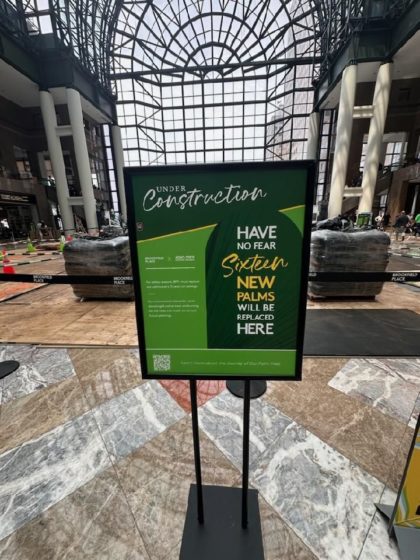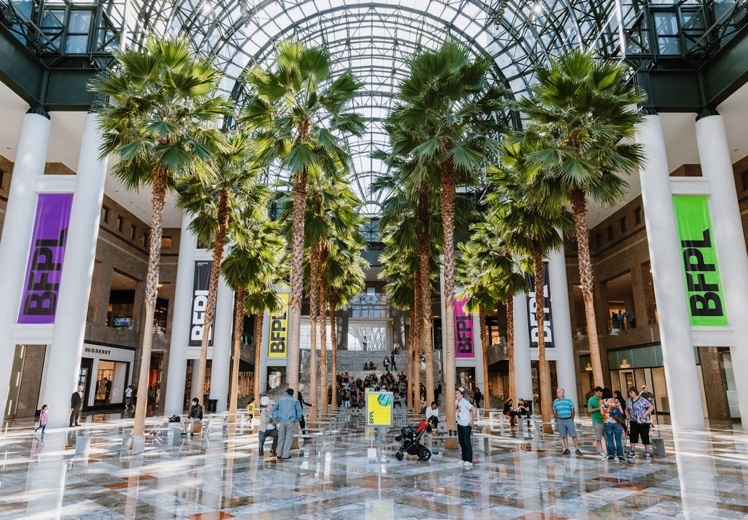
## The Winter Garden’s Palm Trees: A Journey of Renewal## The Winter Garden’s Palm Trees: A Journey of Renewal J. had informed me that Brookfield would be replacing the palm trees in the Winter Garden, but it wasn’t until I saw N.’s photos that I realized how shocking it would be to see the space without greenery. The trees have outgrown their fence, and not for the first time. While I had never thought much about the palms before, finding them a bit silly in New York City, their journey has been quite incredible. Their unique foliage makes them ideal for the space. The Winter Garden Atrium itself, designed by César Pelli and his wife Diana Balmori, was built in 1998. Balmori’s obituary highlights her significant contributions to landscape architecture, including the first rooftop garden on a residential building. After 9/11, the atrium was restored at a cost of $50 million. The palm trees were replaced in 2013 when they reached about 60 feet in height. Indoors, their flexibility is not developed as they grow, dictating the need for replanting every 11 years. Now in 2024, the 11-year-old palms are being removed. John Mini and his suppliers have spent the past three years preparing a new crop, searching for Washingtonia palms of the right height and aesthetics. The old palms have been mulched, and the new trees arrived this week. The planting process is underway, and landscapers will continue to monitor the trees discreetly. The unveiling of the new palm trees is highly anticipated. They will continue to be a defining feature of the Winter Garden, providing a touch of greenery in the heart of the city.
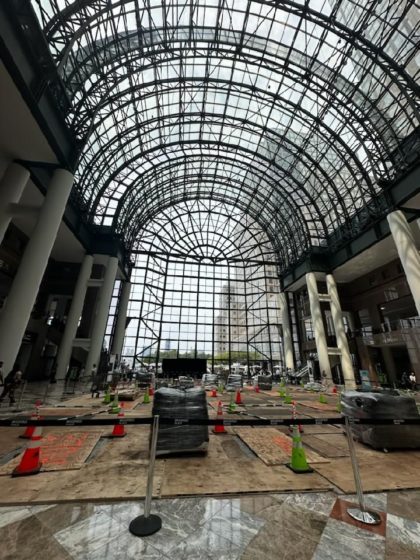
J. had warned me that Brookfield would be replacing the palm trees in the Winter Garden, and then Brookfield sent out a press release, but it wasn’t until I saw N.’s photos – and walked over to see them myself – that I realized how shocking it is to see the space without any greenery.
The trees have outgrown their fence, and not for the first time. And although I mentioned it a few days ago, I thought it was worth a long post here. I’d never really thought much about the palms — I always thought it was a bit silly and gimmicky to have palm trees in New York City — but the journey of the palms has been pretty incredible. And I don’t think there’s a better tree for that space, since their leaves are only on the top.
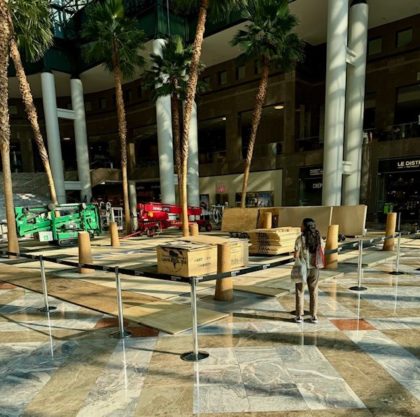
And I couldn’t help but look back at the Winter Garden Atrium itself, for those of us (me) who don’t remember its origins. It was built in 1998, along with the rest of the World Financial Center, and designed by architect César Pelli. His wife, the renowned landscape architect Diana Balmori, designed the interior of the atrium and installed the original palms. Among her many other credits is building the first rooftop garden on a residential building — at the Solaire. Her obituary in The Times is worth reading.
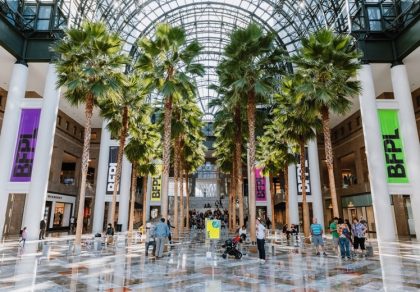
After 9/11, the glass panels and interior of the atrium were restored at a cost of $50 million (there were also plans to remove the grand staircase, which no longer led to the pedestrian bridge leading to the World Trade Center, but was fought off by local residents). And of course, the palm trees were restored then, in 2002.
They were replaced in 2013 by Brookfield landscape architects, John Mini Distinctive Landscapes, when they had reached about 60 feet in height. It turns out that when palms are outside, their trunks are strengthened by wind and rain, but indoors their flexibility is not developed as they grow at a rate of about one to two feet per year. This dictates the requirement to replant once the trees reach 55 to 60 feet in height. (The atrium itself is 120 feet high.)
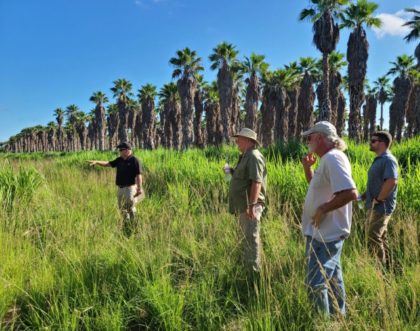
John Mini Characteristic Landscapes
That brings us to 2024, where the 11-year-old palms are now being removed. John Mini and his suppliers have spent the past three years preparing this new crop for city life. They visited fields and fields of palm trees in southern Florida, searching for a stand of Washingtonia palms of the right height, aesthetics, health and age. From those 2,000, they then dug up a selection and brought them to Pahokee Palms’ nursery, where crews built a 48-foot-long “shade house” that allows tropical trees to transition to indoor environments with lower light intensity, quality and duration.
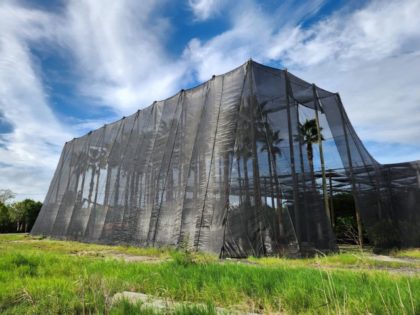
John Mini Characteristic Landscapes
The old palms have now been removed and mulched, and some of that mulch will be added to the beds of the new trees, which are arriving this week. And the planting of the new trees will begin. The landscapers will continue to monitor the trees for months, discreetly, at night. Stay tuned for the unveiling.
